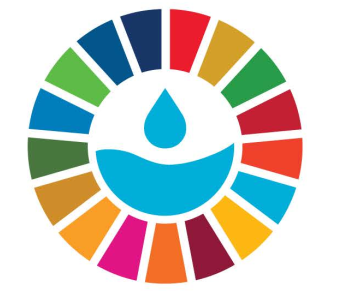Facing cost recovery constrains in water infrastructure development, apply bankable and sustainable WASH Solutions to overcome affordability barriers limiting the mobilization of private capital.
Hungarian Water Partnership
(
Partnership
)
#SDGAction50153
Description
To reach the SDG 6 goals, we need alternative approaches, financing mechanisms and solutions for safe drinking water supply and municipal liquid waste treatment. Even in Europe water utility infrastructure management and development are facing profound financing gaps. The reconstruction of the ageing water infrastructure is underfinanced and underperforming. Capital costs are not or are just partly included in tariffs, nor covered by public spending. The yearly reconstruction rate of the existing infrastructure is less than 1%-0,1%, which is presuming an unrealistic life expectancy of up to over 1.000 years. The non-refundable grant-based EU public funding for the “new accession countries” requires only the inclusion of the depreciation of the assets, (which equal to bank finance with 50 years payback period and an interest-free loan of 2% of the invested capital/year). Still, even this is not provided due to affordability limitations. Detailed and large-scale investment and asset evaluation results show that EU standard “nearly full scale” water and sanitation utility infrastructure investment/replacement costs are 1.500-7.500.-€ per capita. With the collection and distribution network fluctuating between 1.200-5.700.-€ per capita (75-80% of the total) depending on local conditions, but mainly on the size and type of the municipalities - the smaller/”rural like” the more expensive. These numbers are reflected also in the UNEP City-Level Decoupling Urban resource flows and the governance of infrastructure transition Report. It estimates that the investment required to meet the demand for urban water infrastructure (to refurbish the old and build new) is US$ 22.6 trillion. over the next 25 years for all the cities of the world. City-Level Decoupling: Urban Resource Flows and the Governance of Infrastructure Transitions (unep.org) The report suggests that by 2050 more than 6 billion people (almost 70% of the world population) will live in urban areas. Calculating US$ 22.6 trillion (US$ 22.600 Billion) for 6 Billion people we are coming to the EU standard investment value of 3.767.- USD/capita investment needs. If, in the case of the world’s richest regions full scale and inclusive water infrastructure development are unbankable, then how do we expect it to be feasible worldwide? With this alternative approach and “near-to-consumer” solutions, an investment cost for drinking water provision and liquid waste handling would be 70.- €/per capita for communities without adequate water supply or sewerage network. Drinking water for an initial investment of less than 25.-€/capita, and service of less than 5.-€/person/year, including initial capital costs. Liquid waste management, and purification for an initial investment of less than 45.- €/per capita, and service of less than 10.- €/person/year, including initial capital costs. These technologies provide structural, innovative and sustainable solutions which can also mobilize private capital to address the financial gap in the sector, supporting communities that are most left behind.
The financial resources needed to finance city-level WASH investments indicated in the UNEP City-Level Decoupling Report (22.600 Billion USD) are unrealistic to be found and invested! The alternative “near-to-consumer” solutions with an investment cost for drinking water provision and liquid waste handling would be 70.- €/per capita, and the total capital needed for 4 billion people living in less developed cities and rural areas will be only 280 Billion USD The Impact of the implementation of the alternative “near the consumer” solution will be • reduction of required investment capital by nearly 99%, • safe drinking water provision for less than 5.-€/person/year, • Liquid waste management, and purification service of less than 10.- €/person/year, • Affordable WASH services, with tariffs including initial capital costs. • return on the invested capital >> involvement of private capital. To accelerate SDG implementation in the field of drinking water purification and wastewater treatment and to avoid environmental and health problems, and without extra costs and extra work, using “near to consumer” drinking water units and the treatment of 100% liquid waste are the answers to solve the existing problem in a financially viable, sustainable and affordable way. These investments, which offer a quick, almost immediate solution, pay off in the short term and can be attractive to private investors. Private capital is thus attracted to water infrastructure investments in addition to the often extended and difficult-to-finance public projects. Moreover, these solutions contain not only the development itself but also professional training programs on retaining the local workforce and preparing them to operate the designed and built systems. To provide not only technological solutions but sustainability from a public health point of view. Surface water contamination will be eliminated, the impact on the environment as well as hazards to health will be remarkably reduced. On the basis of economic calculations and experience it can be reasonably stated that these solutions are the most cost-effective and sustainable methods for providing WHO-compliant drinking water and treating the generated 100% liquid waste, both FROM a CAPEX and OPEX point of view.
Hungarian Water Association, Pureco Group of Companies, Jospong Group of Companies, Sewerage System Ghana Limited, Ghana Water Company developing countries where there is no adequate water supply network, and where no sewerage system exists.
Other impacts: Drinking water purification: • No Plastic waste is generated, but healthy drinking water is provided. • No Water loss, Revenue water the ROI is forecastable, a complex solution was provided without high infrastructure investment and network operation cost. • prompt solution for rural communities, settlements without network water, public institutions schools, hospitals • training for the local staff to operate and maintain the plant, and knowledge sharing. Treatment of generated wastewater: • In line with the local conditions and needs tailor-made wastewater treatment plant • To ensure the successful operation of the constructed treatment plant, and thus its long-term sustainability, a series of training programmes are to be organised for local professionals. • By establishing a new, sustainable wastewater treatment plant with this technology, the livelihood of the citizens will be improved as they can live in a healthier environment. • The number of illnesses caused by untreated wastewater will be reduced. https://www.youtube.com/watch?v=XFm3PaywSPM&t=77s https://pureco.hu/news/president-in-kumasi https://pureco.hu/news/progress-in-ghana https://pureco.hu/_fileinline/Septopure_technology_short.pdf?id=61a0a62a757fd42e0a6a9013 https://www.youtube.com/watch?v=qNozlIVV8hw&t=8s https://www.youtube.com/watch?v=wA8ELxKK1J0&t=56s
SDGS & Targets
Goal 6
Ensure availability and sustainable management of water and sanitation for all
6.1
By 2030, achieve universal and equitable access to safe and affordable drinking water for all
6.1.1
Proportion of population using safely managed drinking water services
6.2
By 2030, achieve access to adequate and equitable sanitation and hygiene for all and end open defecation, paying special attention to the needs of women and girls and those in vulnerable situations
6.2.1
Proportion of population using (a) safely managed sanitation services and (b) a hand-washing facility with soap and water
6.3
By 2030, improve water quality by reducing pollution, eliminating dumping and minimizing release of hazardous chemicals and materials, halving the proportion of untreated wastewater and substantially increasing recycling and safe reuse globally
6.3.1
Proportion of domestic and industrial wastewater flows safely treated
6.3.2
Proportion of bodies of water with good ambient water quality
6.4
6.4.1
Change in water-use efficiency over time
6.4.2
Level of water stress: freshwater withdrawal as a proportion of available freshwater resources
6.5
By 2030, implement integrated water resources management at all levels, including through transboundary cooperation as appropriate
6.5.1
Degree of integrated water resources management
6.5.2
Proportion of transboundary basin area with an operational arrangement for water cooperation
6.6
6.6.1
Change in the extent of water-related ecosystems over time
6.a
6.a.1
Amount of water- and sanitation-related official development assistance that is part of a government-coordinated spending plan
6.b
Support and strengthen the participation of local communities in improving water and sanitation management
6.b.1
Proportion of local administrative units with established and operational policies and procedures for participation of local communities in water and sanitation management
SDG 14 targets covered
| Name | Description |
|---|
Deliverables & Timeline
Septopure® projects:
Septopure® technology can be constructed from an investment value of less than €45 per capita instead of €1,000 – 4,500 per capita for the EU standard “nearly full scale” sanitation utility infrastructure.
The technology can offer a return on investment and operating costs of less than €10 per person per year instead of the €50-100 per person per year operating costs in case of “nearly full scale” sollutions.
PurAID® modular, pallet-sized drinking water treatment system
Our PurAID® technology as a point-like solution gives a perfect solution. No pipeline construction is needed, solves water shortage with an investment value of less than €25 per capita instead of the €500-2,500 per capita value needed for EU standard “nearly full scale” water utility infrastructure.
PurAID® offers a sustainable and affordable solution with less than €5 annual operational cost/capita with high-quality, modern regenerable filter technology. Furthermore, it indirectly reduces the ratio of bottled water thus the quantity of plastic waste.
PurAID® is a compact technology with easy installation into an existing water treatment network or as a new purification item, where no additional pipeline construction is needed. Installation is twofold, either to an end-of-pipe or by connecting to a surface or groundwater source.
PurAID® is entitled to secure a safe water source for rural communities with a short installation time providing healthy drinking water for the people.
We provided healthy drinking water of the citizens of Akim Wenchi (Ghana), the goal was to be able to bring safe water to the community that lacks it and do so more quickly and cost-effectively than other water projects.
Resources mobilized
Partnership Progress
Feedback
Action Network

Timeline
Entity
SDGs
Region
- Africa
- Global
Other beneficiaries
local (rural) communities, water utility service providers, private investors, schools, health centres developing countries where there is no adequate water supply network, and where no sewerage system exists.
More information
Countries

Contact Information
Károly, chairman

